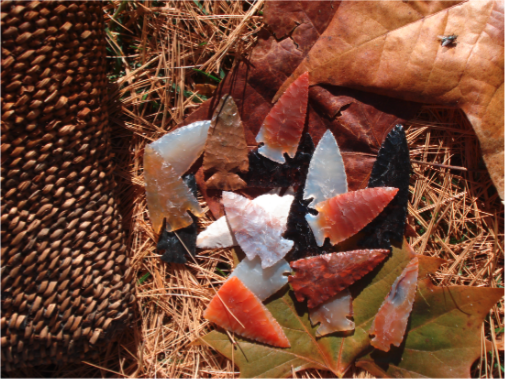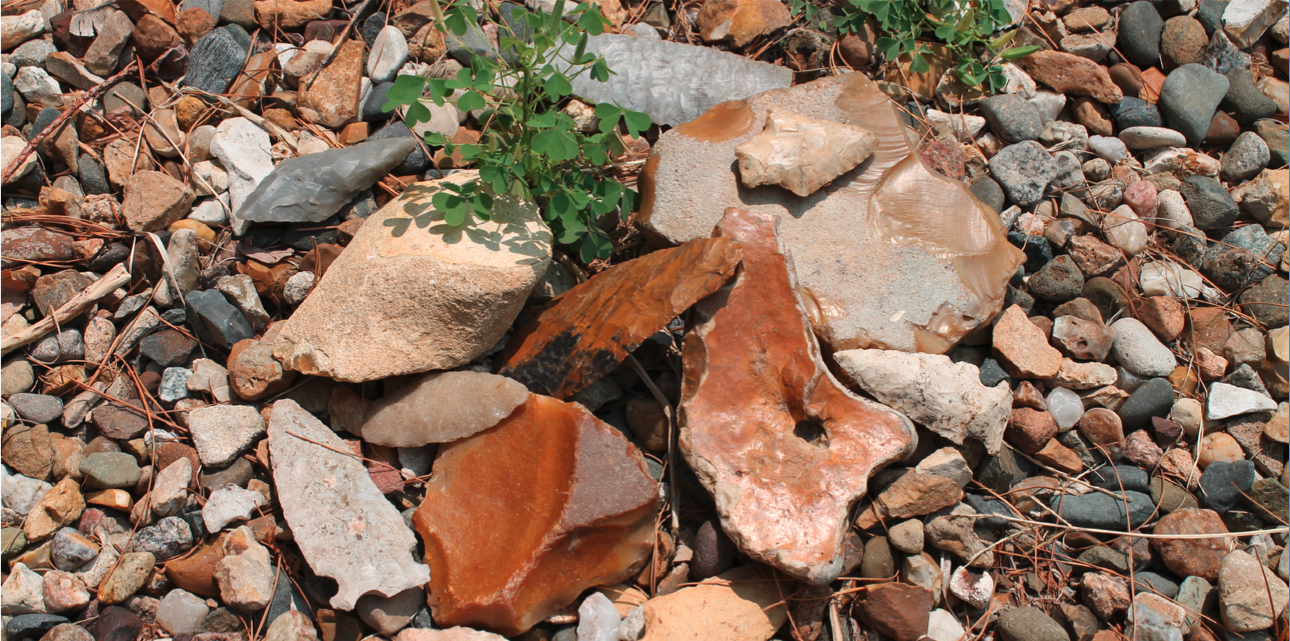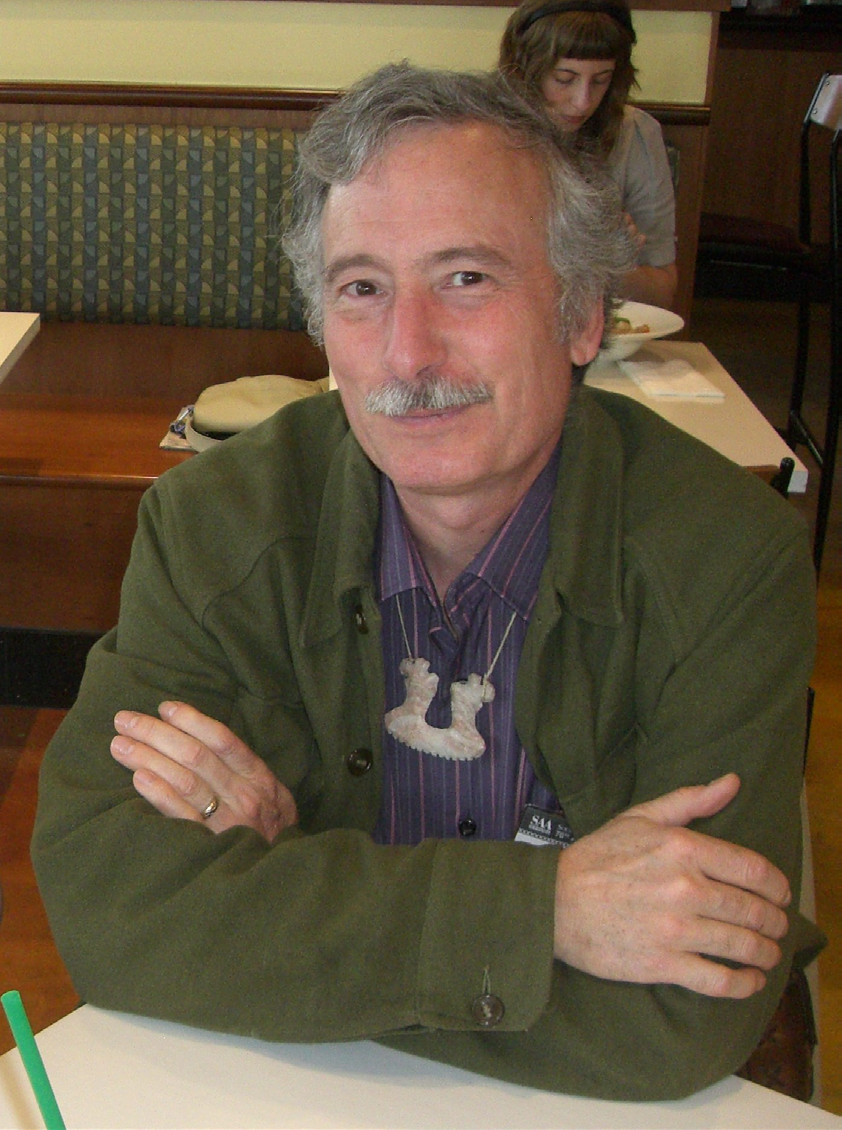I’m an archaeologist, so I get calls occasionally: someone has an artifact they want me to look at. Usually it’s an ‘arrowhead’ they have just found, or a collection made over the years or inherited from granddad. I don’t encourage people to collect artifacts without documenting location, because this removes them from the site and diminishes the chances that they can tell us anything about past people. Nevertheless, I try not to sound too self-righteous about archaeological ethics when I talk to a friendly member of the public. I always enjoy looking at someone’s artifacts, even if I secretly lament the loss of knowledge when objects are removed from their original contexts. I can usually make a friend and tell them something they find interesting. “See the beveled edge on this one? That means it was probably resharpened—some of these big arrowheads were actually spear and knife points.” And so on. Archaeologists need to talk to the public, not only because support for archaeology ultimately comes from them, but because many great archaeological finds were made by the farmer, the construction worker, or the curious kid who happened on something unusual and told “the authorities.”

Arrowheads made by the author from a variety of stones, using ancient techniques. Photo courtesy of John Whittaker.
Sometimes the find is “big bones.” My heart beats a bit faster when I hear that, because Ice Age mammal finds are not impossible in Iowa. When foundations were being dug for one of the downtown stores in Grinnell in the late 1800s, pieces of mammoth tusk turned up. They were displayed in the college’s Parker Museum of Natural History, a rather fine small collection that was allowed to deteriorate through the 1950s and eventually bulldozed into the ruins when an unusually stupid administration tore down most of our attractive 19th Century buildings. Most such Pleistocene animals (not administrators, but such things as mammoths, camels, and giant ground sloths) lived before people populated North America, so properly speaking, they are not archaeology. But they are still interesting, and there is always the possibility that a mammoth might be late enough to have been the prey of a Clovis hunter 13,000 years ago, which would make it rare and important archaeology. However, a quick glance at the bones usually tells me that we have found the last resting place of Dobbins the forgotten workhorse or Daisy the elderly milk cow, disposed of in a pit in the pasture, forgotten by the generations after granddad.
One morning as I arrived early at Grinnell College’s Goodnow Hall, where I have my office, a uniformed police officer climbed out of his cruiser and accosted me on the steps.
“Are you Dr. Whittaker?”

Old “Arrowheads” from the College’s former Parker Natural History Museum, along with river-rolled flints that look like artifacts. Photo courtesy of John Whittaker.
I felt the twinge we all do when confronting the legal authorities, but as far as I could remember I hadn’t done anything criminal, illegal, or even publicly embarrassing in the last few weeks, so I admitted my identity.
“Someone said you’re the archaeologist. A hunter found some bones we would like you to look at.”
Wow, my own episode of CSI Grinnell! Human identification isn’t my field, but there are indeed anthropologists who specialize in forensic investigations, and I did have basic human skeletal training with one of them, long ago in my graduate student days. Inside my office we opened a box with the faint fragrance of decay to reveal a set of long narrow bones held together by some remnants of flesh and sinew. I was only slightly sorry to be able to tell the officer immediately that this was not a human hand, but what was left of the upper paw of a large mammal. A quick visit to my drawers of animal specimens confirmed this: Dog. At least the police would not have to waste time searching a crime scene for the rest of the body.
Not long ago I was asked to look at another artifact collection. As usual, someone had called the department, where our administrative assistant passed her on to me. The woman seemed nice on the phone, and said she had a lot of ‘old Indian stuff.’ She lived on a local farm, but now had to sell the farm and move, and wanted her finds properly cared for.
I applauded the idea. Most artifact collections, without any specifics about where they were found, are largely useless except as teaching specimens. A collection from one specific small area, however, could inform us about an important site that should be investigated or preserved, or might at least represent the range of different periods and people who had once occupied that little river valley. Such collections, with documentary information, are valuable and should be preserved. I asked the caller what she had. “Oh, lots of arrowheads, all sorts of tools, some pottery.” This was encouraging. You never know what people may have found, and some very odd things get called artifacts, but who could fail to recognize arrowheads?
We made an appointment, and I drove several miles out of town, past grain elevators, through the corridors of endless cornfields, over a shaky bridge crossing a small stream, to a run-down farm, far from anything. A crippled windmill swung in the breeze that whistled through gaps in the silos and shook the rotting shingles on a leaning barn. The house was shabby but I’ve seen worse. I was greeted at the door by a hideous but placid pit bull, who was pushed aside by an indifferent cat, followed by a run-down looking woman about my age. She introduced herself as Selma. A bit overweight, stringy hair, dressed in a worn nightgown and puffing a cigarette—one of Iowa’s rural poor. Selma welcomed me through an entry that was cluttered with dog and cat bowls and muddy shoes, led me past a kitchen, and into the sitting room.
“The kids are gone now,” she said, nodding at an age-graded series of fading high school photos. “Hope you’re not allergic to cats.”
As I sat on the hairy sofa and submitted my knuckles to the bulldog’s tongue. I felt a certain kinship with Selma: the room was messy but clean, and she plainly suffered from the collecting bug. Stacks of magazines, a large hoard of Tupperware, a few too many pieces of furniture.
My impressions of the room are vague because my attention was focused on the large coffee table, on which was spread her collection of “‘artifacts’.” My spirits sank. In front of me, in tidy rows, was the ugliest collection of worthless rocks I have ever seen. And I speak as one who likes worthless rocks.
These are the finds that try my soul. Selma had asked for my professional expertise, so I wouldn’t lie to her, but I didn’t think she was going to want to hear what I had to say. There were at least 200 little lumps of limestone and misshapen bits of gravel. I took slight comfort when she said, drawing deeply on her cigarette and coughing a bit, “I haven’t been able to get out and find more since the cancer.”
I was sorry for her health problems, but I certainly did not regret the lack of more ‘artifacts.’ I spent a slow hour looking seriously at each miserable mineral, trying to be polite and encouraging, trying to educate a bit. Friendly Archaeologist: “Oh look, that’s a nice fossil, probably a bit of horn coral,” and “That one is a piece of granite brought down south by the glaciers, see how it’s polished on one side.”
Selma picked up one of the rocks: “See how this fits my hand? Your thumb goes right here. I bet they used this for scraping hides.”
I restrained an eye-roll. They always say that. If a piece of rock fits the finder’s hand, however dull, or ragged, or irregular, or boring, or natural and untouched by human hands it may be, the would-be expert is convinced that they know how it was used. To be fair, some archaeological interpretations are not much more sophisticated, though we DO usually know the difference between a rock and a tool. At some level, though, all artifacts take their glamour from this kind of thinking. Whether you are an academic like me or a farmer like Selma, understanding an arrowhead connects you in some way with that interesting, vaguely imagined ancient life, when monsters such as mammoths ruled the earth, when humans fought for survival with their wits and simple tools…. You would not believe what appears on Ebay as a ‘genuine Indian thus-and-so.,’ But that is another story.
Gritting my teeth, I worked my way across the table with Selma, one pebble at a time.
Selma: “Here’s a really nice arrowhead.”
Me (mentally pulling my hair): “Uh, well, actually… I think it’s a bit of slate. That stuff sometimes breaks with straight edges like that. It doesn’t really seem to have been worked on at all. But this one, this shiny stuff is chert, which is what the Indians did make tools out of. See how it fractures with a sharp edge…”
It was a long and dreary slog, and she just wouldn’t have any of it. I kept remembering the man who had approached me once with a “Neanderthal necklace”—a group of purely natural fossil bits—who left my office in a huff. Then there was the man who kept trying to publish papers on his collection of obviously faked nineteenth century “ancient carvings,” and maintains that the academics are suppressing his great find.
Finally I made my excuses to Selma:. “Gotta get back and get ready for classes. Thanks for showing me your stuff…”
We parted on good terms. Although we really didn’t do much for each other, I like to hope that I left her feeling that academics aren’t too stuck-up to talk to citizens, even if we must be kinda stupid. At the door she closed the episode perfectly. “I do want my stuff taken care of. Do you think anyone at the Meskwaki Tribe would be interested?”

Three points made by the author, along with river-rolled flints that look like artifacts, and gravel. Photo courtesy of John Whittaker.


